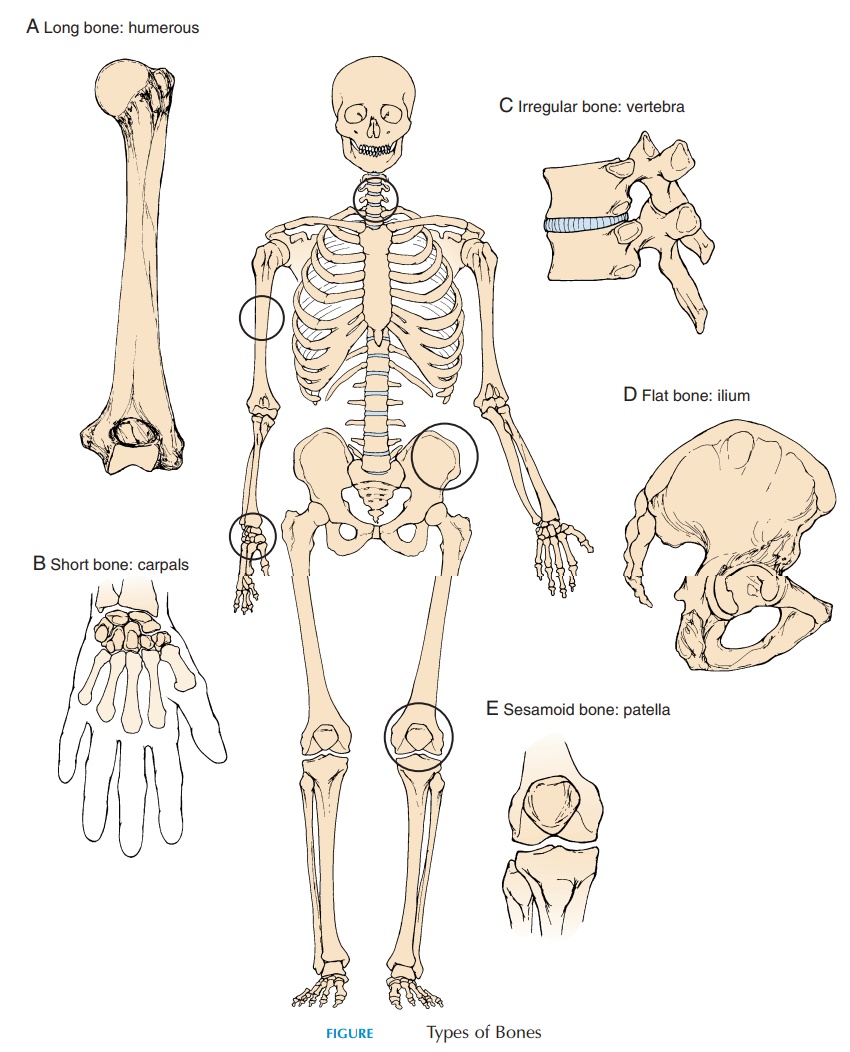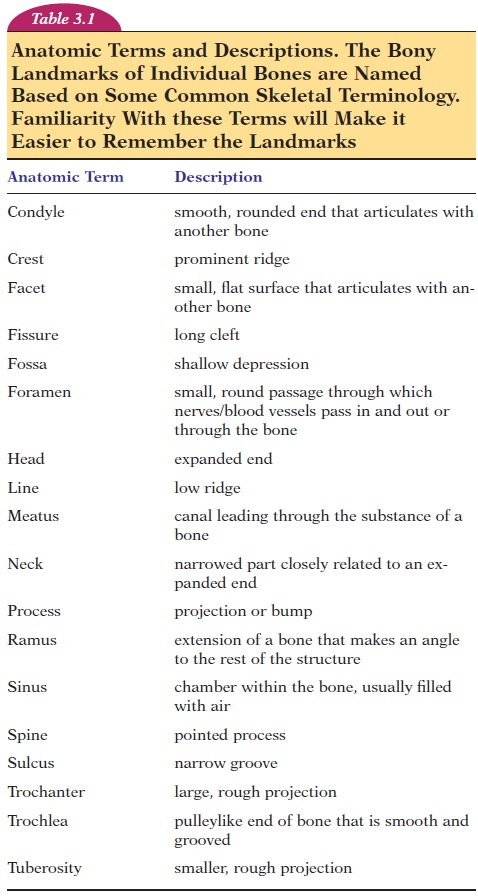Chapter: The Massage Connection ANATOMY AND PHYSIOLOGY : Skeletal System and Joints
Types of Bones

TYPES OF BONES
The bones of the body are classified, according to shape, as long bones, short bones, flat bones, and irregular bones (see Figure 3.4). Long bones, as thename suggests, are long, with the length being greater than the width. The femur or thighbone, the humerus of the arm, metacarpals, metatarsals, and phalanges are a few examples.

Short bones are almost equal in length, width,and height. Most of the carpals—the small bones lo-cated in the wrist (except pisiform, sesamoid bone)— and most of the tarsals—the small bones in the ankle region (except calcaneus, irregular bone)—are good examples of short bones.
Flat bones are broad and thin with a flattenedand/or curved surface. The shoulder blade (scapula), some of the skull bones, ribs, and breastbone (ster-num), are all examples of flat bone. Their thin, broad area helps protect inner organs and/or provide surface area for muscle attachment. Flat bones contain the red bone marrow in which blood cells are manufactured.
Irregular bones are those in various shapes andsizes. The facial bones and vertebrae are all examples of this type. Small, irregularly shaped bones, called sutural or wormian bones, are found where two ormore other bones meet in the skull. The number, size, and shape vary by individual.
Rarely, small, flat, round bones develop inside ten-dons. These bones are called sesamoid bones. The patella is a sesamoid bone found in all individuals. Other sesamoid bones are often found around the knee joint or the joints of the hands or feet. Sesamoid bones help reduce friction and stress on tendons and may also help to change the direction of tension placed on the tendon.
To examine joints and learn about muscles and the movements they produce, the names of the bones of the body and the anatomic landmarks of each bone must be looked at in greater detail (see Table 3.1).

Related Topics